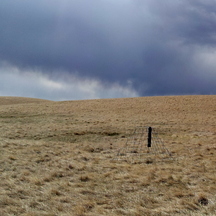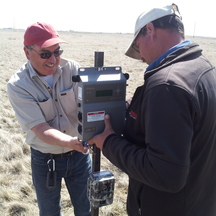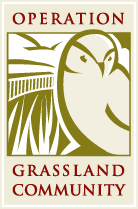News
Acronym city
May 2015
Let’s talk about EGS, EKG, and ARUs in the Prairies.
First of all, what are EGS?
Ecological Goods and Services (EGS, EG&S, sometimes called Ecosystem G&S) are benefits derived from healthy, functioning ecosystems. These benefits include air, water, and soil quality, carbon storage, and biodiversity. Additionally, EGS can include social and cultural benefits, such as recreational opportunities or a sense of well-being in a natural system. EGS are an integral part of any ecosystem, regardless of human presence. However, in today’s world, where one would be hard-pressed to find a natural system completely devoid of human footprint, we have the ability to directly affect the quality of EGS—both negatively and positively.
Forms of land use such as industrial activity, urban development, and agriculture often are perceived as having negative consequences to EGS. However, not all practices are inherently “bad” for the environment. Certain activities may be designed in such a way as to work within the natural ecosystem. From a ranching perspective, best management practices can maintain and enhance grassland EGS. For instance, different grazing regimes create preferred habitat mosaics for species-at-risk. Maintaining native vegetative species not only provides a means for carbon storage, but improves soil quality while providing erosion control and flood mitigation. In turn, these EGS provide economic and social benefits beyond just those living and working in the particular natural region.
However, although ranchers may be maintaining and enhancing grassland EGS, the current economic marketplace generally does not account for this stewardship within the price of beef—even though grazers are an integral part of the EGS system. On a positive note, there is much exploration into how to best encourage and reward land-owners for their stewardship actions, including incentive-based programming to increase EGS.
In the advent of these programs, the need for established, verified record keeping is invaluable, in order to provide evidence-based documentation of such environmental indicators as species-at-risk occurrence and vegetative quality. OGC ranchers are doing this by measuring productivity and habitat suitability through the Land EKG program, and wildlife occurrence through a complementary sound- and camera-monitoring system.
Land EKG
 Land EKG (yup, EKG as in electrocardiogram) is a tested range monitoring system developed in the USA by 4th generation rancher Charlie Orchard, now used in Canada as well. Although originally designed to measure and monitor the function and productivity of rangeland, the established monitoring protocol easily can be expanded to include measurements for wildlife habitat suitability (i.e., for Sprague’s Pipit, a species-at-risk in Alberta). To date, 11 OGC members have over 20 Land EKG transects in Alberta’s grassland region. Expansion of the program is planned for 2016.
Land EKG (yup, EKG as in electrocardiogram) is a tested range monitoring system developed in the USA by 4th generation rancher Charlie Orchard, now used in Canada as well. Although originally designed to measure and monitor the function and productivity of rangeland, the established monitoring protocol easily can be expanded to include measurements for wildlife habitat suitability (i.e., for Sprague’s Pipit, a species-at-risk in Alberta). To date, 11 OGC members have over 20 Land EKG transects in Alberta’s grassland region. Expansion of the program is planned for 2016.
And…..ARUs? What is that?
This spring, in collaboration with the Alberta Biodiversity Monitoring Institute (ABMI), Operation Grassland Community installed ARUs (Autonomous Recording Units) near Land EKG transects. ARUs are sound recorders that are used to capture wildlife vocalizations, as a means to determine species occurrence.


.
Used extensively and successfully by ABMI in the boreal forest to detect rare and hard-to-monitor species (e.g. the Yellow Rail), ARUs will complement the habitat suitability monitoring portion of Land EKG by simultaneously determine occurrence of species-at-risk and other wildlife species.
So what’s in store for this acronym city?
Incorporating habitat suitability measurements into existing Land EKG protocol will not only provide a real-time assessment for Sprague’s Pipit (or other SAR) occurrence suitability, but—continued on a regular basis—also can serve as a record of maintenance, improvement and/or potential enhancement of grassland habitat. Therefore, Land EKG is a good vehicle for a combination productivity-habitat monitoring approach, as it incorporates measures for both economic and ecological gains. As the concept of EGS (and payment for) becomes increasingly known to the general public, programs like Land EKG and the use of wildlife monitoring techniques ensure that landowners are already in position to demonstrate existing stewardship successes.
…

